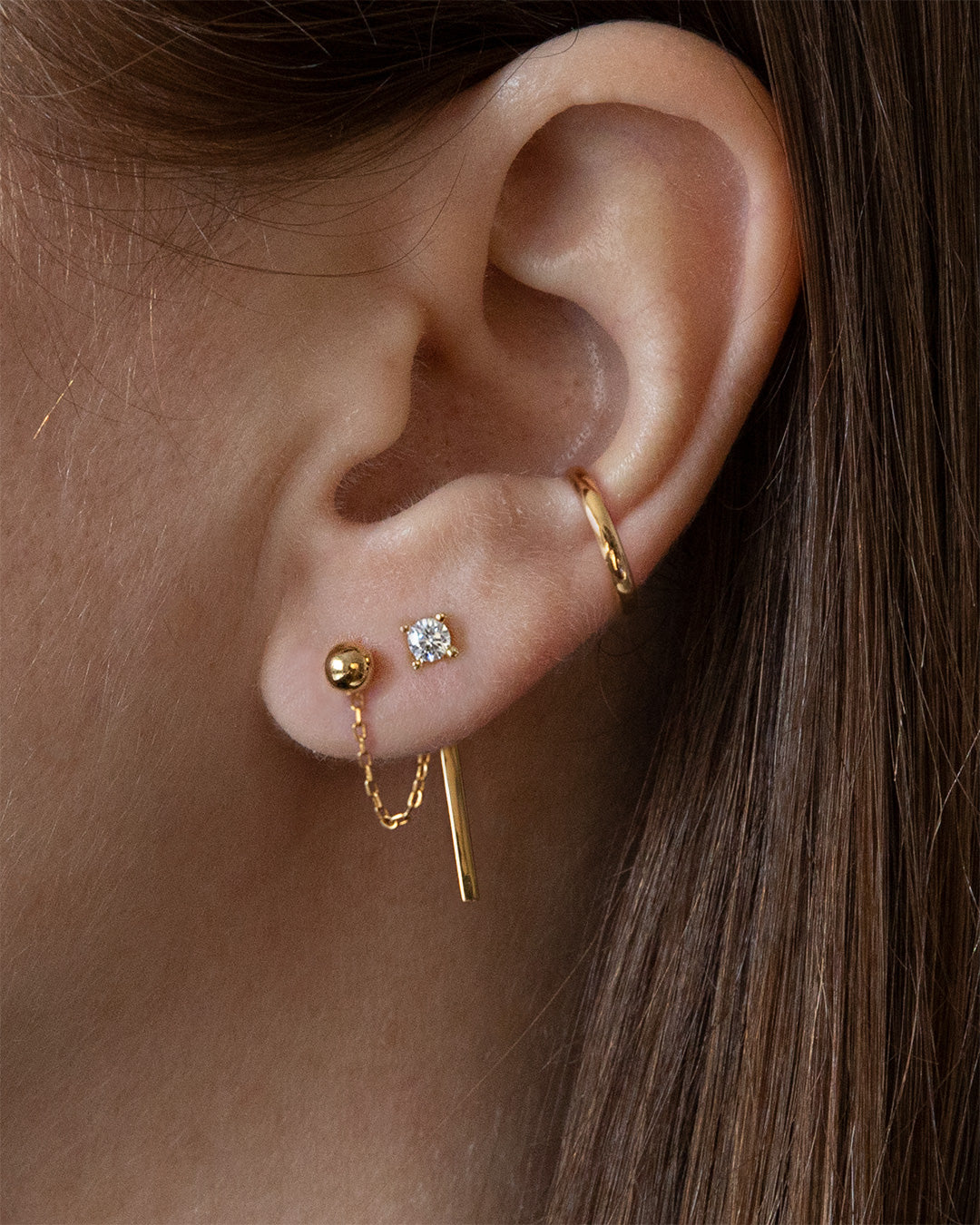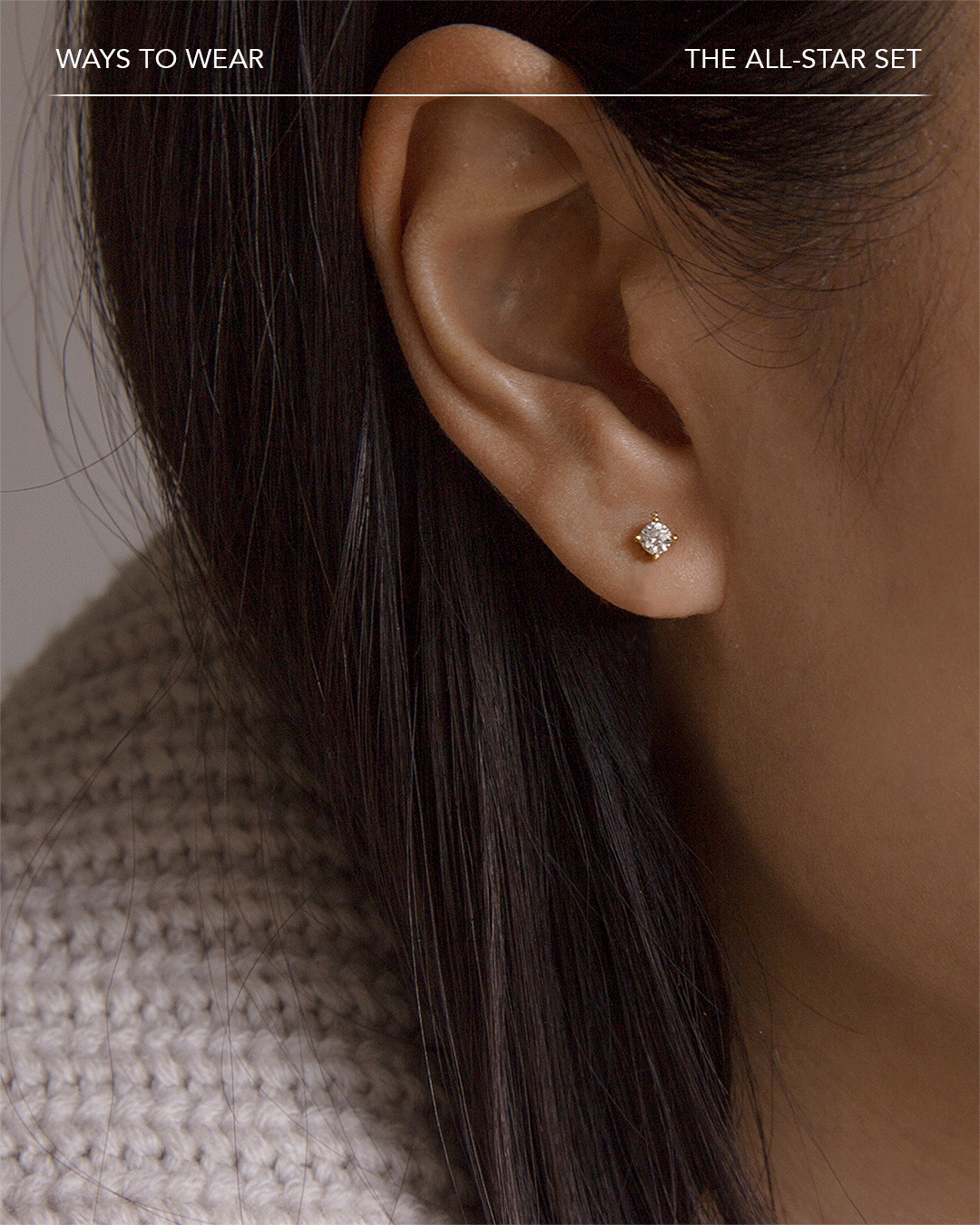Sharing tips you'll find useful for caring for your vermeil jewelry. Our guide includes:
- What is vermeil?
- Myths about vermeil
- How to clean vermeil jewelry
1. What is vermeil?
Pronounced “ver-may”. Gold vermeil is at least 10K gold (we use 14K gold) that is a minimum of 2.5 microns thick, and layered over sterling silver. These are strict standards that must be met in order for jewelry to be called vermeil. Our vermeil is made from premium recycled gold and sterling silver.
Gold plated jewelry on the other hand contains a thin layer of gold over another base metal. There is no thickness requirement for the plating and no standard for what the base metal is.
Gold plated jewelry on the other hand contains a thin layer of gold over another base metal. There is no thickness requirement for the plating and no standard for what the base metal is.
2. Myths about vermeil
MYTH 1 Tarnish is a sign of poor quality.
Because vermeil’s base metal is sterling silver and sterling silver contains copper, over time your piece may show spots of discoloration. It’s due to the copper content. This isn’t an indication of poor quality and a natural occurrence with the metal. The sign of good quality vermeil jewelry is that it can be cleaned and doesn’t stay discolored. We suggest using our anti-tarnish cleaning cloths to easily clean your jewelry.
If you own any solid gold jewelry, you may notice that over time even solid gold pieces will darken and it’s because of the same reason. Solid gold 14K or 18K jewelry is also mixed with sterling silver and copper since pure 24K gold is too soft to be used for jewelry. We recommended caring and cleaning for vermeil and solid gold pieces the same way as shown below.
If you own any solid gold jewelry, you may notice that over time even solid gold pieces will darken and it’s because of the same reason. Solid gold 14K or 18K jewelry is also mixed with sterling silver and copper since pure 24K gold is too soft to be used for jewelry. We recommended caring and cleaning for vermeil and solid gold pieces the same way as shown below.
MYTH 2 Vermeil jewelry can't get wet.
As with all jewelry, solid gold or vermeil, it’s recommended that it does not come in contact with chemicals. Most places where you would get your jewelry wet contain chemicals. For example, pools may have chlorine, swimming in the ocean may have a high salt content. That’s why there's a simplified recommendation to not get your jewelry wet.
Our high quality vermeil can get wet with water. For example, if you happen to shower with your pieces just dry it off and follow the care guide that comes with your pieces. In fact we recommend deep cleaning it in soapy water every so often which you can read more about above.
Our high quality vermeil can get wet with water. For example, if you happen to shower with your pieces just dry it off and follow the care guide that comes with your pieces. In fact we recommend deep cleaning it in soapy water every so often which you can read more about above.
3. How to clean vermeil jewelry
Regular cleaning
Wear your pieces often and gently wipe them with a soft cloth in between wear. We suggest using our Cleaning Cloth Duo.
Read more about on how to care for your Earring Capsule here.
- On a regular basis, gently wipe your jewelry with the beige cloth. It is safe to use on all metals, pearls and gemstones.
- Periodically, if there are any oxidation spots, gently wipe it with the grey cloth. It is specially formulated with a gentle solution for cleaning gold and silver metal. Do not use this cloth on pearls and gemstones.
- These cloths are reusable. We don’t recommend washing them.
- We don't recommend using other cleaning cloths or solutions on the pieces as they may contain harsh chemicals that expedite and worsen tarnish which cannot be reversed.
Read more about on how to care for your Earring Capsule here.

Deep cleaning your jewelry
Cleaning your jewelry is a ritual that keeps your jewelry sparkling as it washes away dust, dirt and traces of chemicals from lotions, perfumes, hair products, body oils or pH levels that may cause your jewelry tarnish. We recommend deep cleaning your pieces before storing your jewelry for a prolonged period of time.Also, we suggest regularly checking in on your pieces and to clean any first signs of oxidation, if any. The longer tarnish sits uncleaned the darker and harder it is to remove and comes back more frequently.
- Mix 1-2 drops of dish soap with lukewarm water in a bowl. Whisk until bubbly.
- Soak your jewelry for 5-10 minutes.
- Use a soft bristle brush to gently clean the hard to reach areas on your pieces (like in between the gemstone settings and chains). We like to reuse an old clean toothbrush as the bristles are usually soft.
- Rinse your jewelry in a separate bowl of clean water (no soap).
- Pat dry your jewelry with a microfibre cloth. We like microfibre because it’s soft and absorbent but you can use any soft cloth.
- Use our cleaning cloth duo to shine and polish your pieces (make sure they are dry). See instructions above under regular cleaning.




